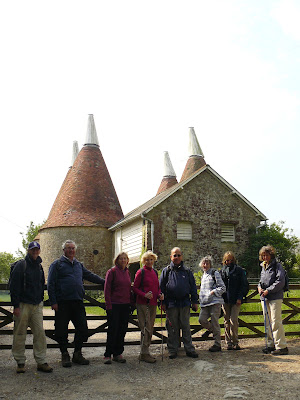Kent is very different from Sussex with its oast houses and orchards. The walk along the Greensands way from Ightham Mote to Knowle Park is too spectacular to depict within the limitations of this blog. You need to walk it for yourselves. Dare I say, it rivals anything that the South Downs offer -- except the sea!
We went along the Chestnut walk in Knowle.
The walk promised Fallow deer and apple blossom. First goal accomplished with this buck, which looks as though it has recently shed its antlers.
More deer...
and more deer.
Then the second objective was achieved.... apple blossom. Job done!
This being Kent, we passed a hazel nut field with an orchard behind.
At the end of the walk there was time to visit the lovely Manor House.


















































